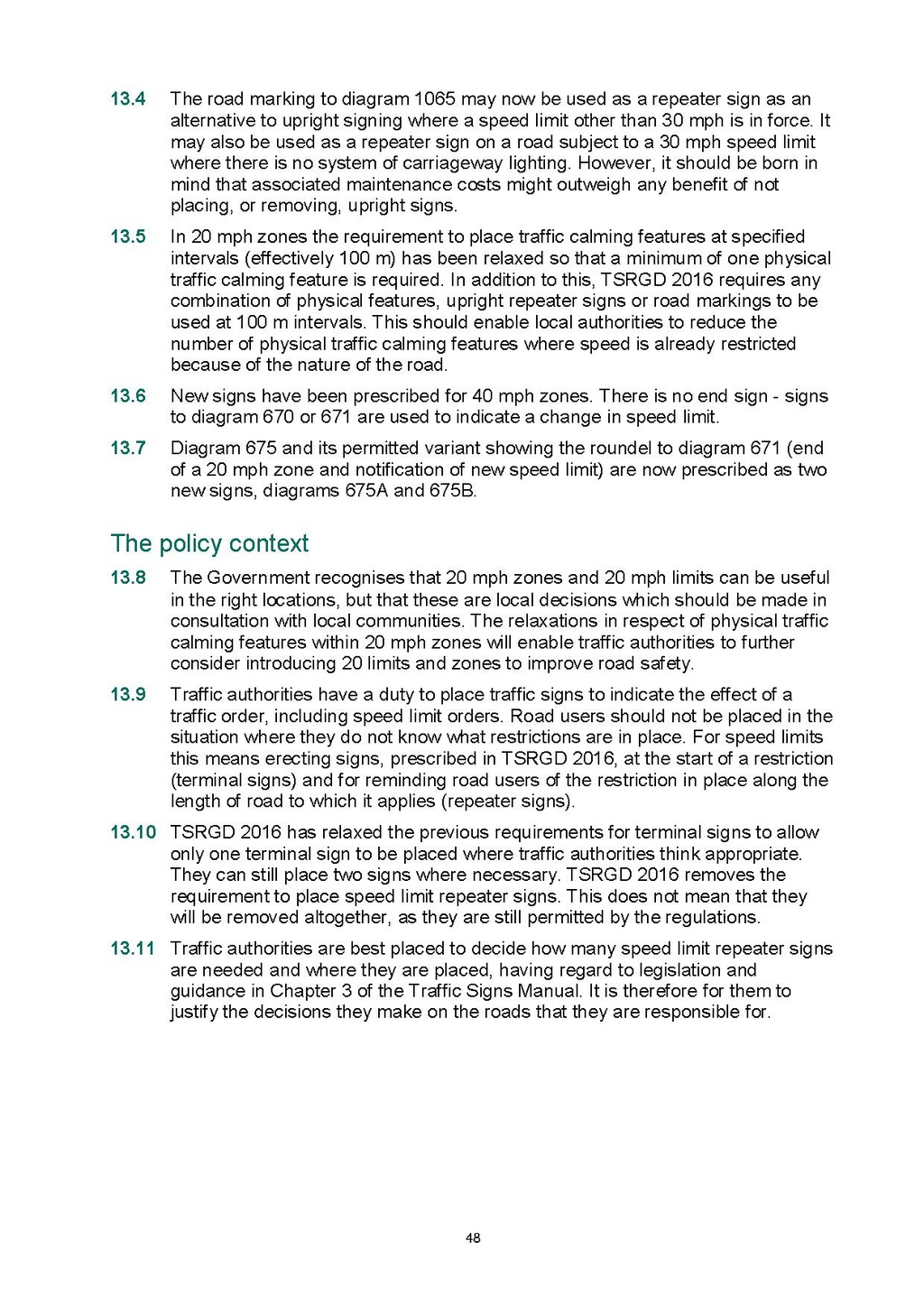This page has been validated.
13.4
The road marking to diagram 1065 may now be used as a repeater sign as an alternative to upright signing where a speed limit other than 30 mph is in force. It may also be used as a repeater sign on a road subject to a 30 mph speed limit where there is no system of carriageway lighting. However, it should be born in mind that associated maintenance costs might outweigh any benefit of not placing, or removing, upright signs.
13.5
In 20 mph zones the requirement to place traffic calming features at specified intervals (effectively 100 m) has been relaxed so that a minimum of one physical traffic calming feature is required. In addition to this, TSRGD 2016 requires any combination of physical features, upright repeater signs or road markings to be used at 100 m intervals. This should enable local authorities to reduce the number of physical traffic calming features where speed is already restricted because of the nature of the road.
13.6
New signs have been prescribed for 40 mph zones. There is no end sign - signs to diagram 670 or 671 are used to indicate a change in speed limit.
13.7
Diagram 675 and its permitted variant showing the roundel to diagram 671 (end of a 20 mph zone and notification of new speed limit) are now prescribed as two new signs, diagrams 675A and 675B.
The policy context
13.8
The Government recognises that 20 mph zones and 20 mph limits can be useful in the right locations, but that these are local decisions which should be made in consultation with local communities. The relaxations in respect of physical traffic calming features within 20 mph zones will enable traffic authorities to further consider introducing 20 limits and zones to improve road safety.
13.9
Traffic authorities have a duty to place traffic signs to indicate the effect of a traffic order, including speed limit orders. Road users should not be placed in the situation where they do not know what restrictions are in place. For speed limits this means erecting signs, prescribed in TSRGD 2016, at the start of a restriction (terminal signs) and for reminding road users of the restriction in place along the length of road to which it applies (repeater signs).
13.10
TSRGD 2016 has relaxed the previous requirements for terminal signs to allow only one terminal sign to be placed where traffic authorities think appropriate. They can still place two signs where necessary. TSRGD 2016 removes the requirement to place speed limit repeater signs. This does not mean that they will be removed altogether, as they are still permitted by the regulations.
13.11
Traffic authorities are best placed to decide how many speed limit repeater signs are needed and where they are placed, having regard to legislation and guidance in Chapter 3 of the Traffic Signs Manual. It is therefore for them to justify the decisions they make on the roads that they are responsible for.
48
